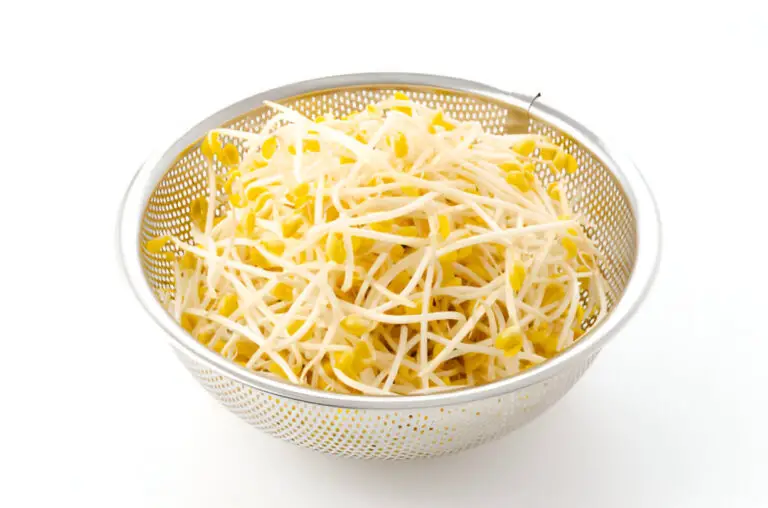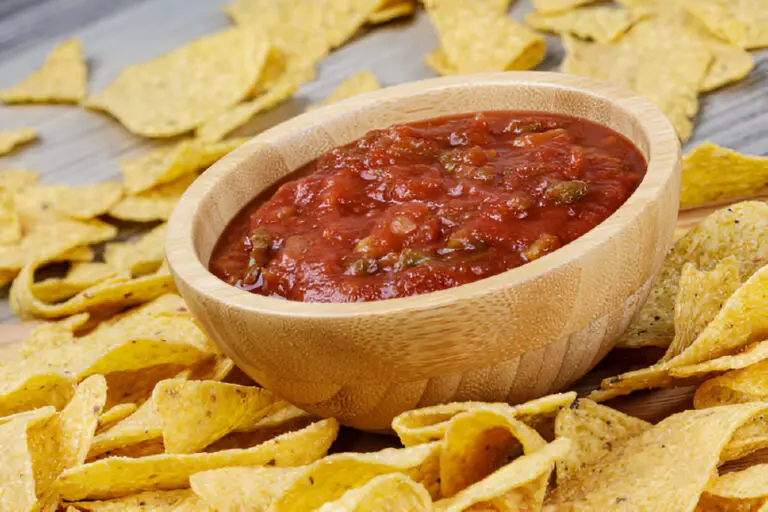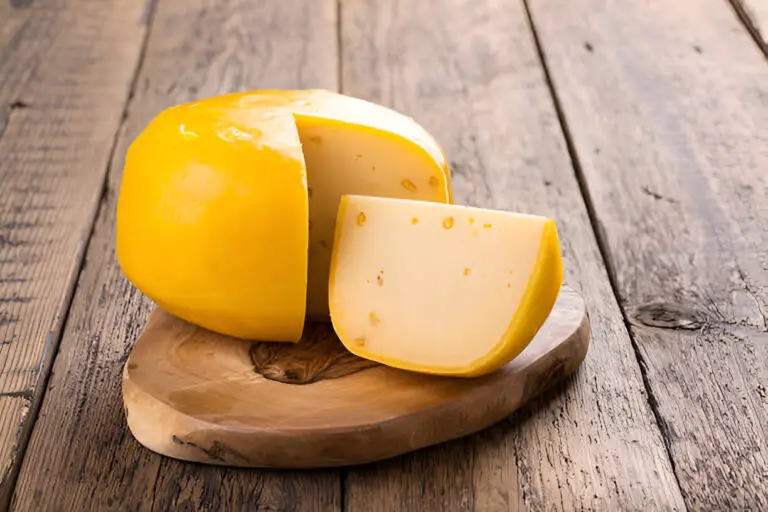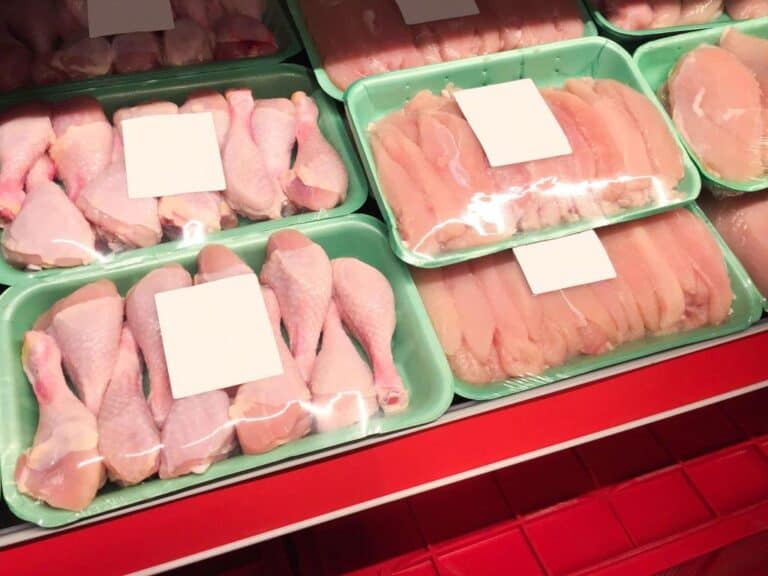How To Soften Hard Taco Shells? (Easy Way to Refresh Stale Taco Shells)

Taco night is a beloved tradition for many families, but sometimes the taco shells can become hard and stale, ruining the taste and texture of the dish. If you’re looking for an easy way to soften hard taco shells and refresh stale ones, there are a few simple methods you can try.
In this article, you’ll find out how to properly soften hard taco shells and how to do it. Follow our simple instructions to get your crunchy tacos back in business. With this easy guide, you’ll be able to quickly turn those stale shells into soft and delicious tacos.
So read on and learn how to soften your hard taco shells quickly and easily!
Why Taco Shells Become Hard
Taco shells are made from corn or wheat flour and are often deep-fried or baked to create a crispy texture. However, if they are not stored or reheated correctly, they can become hard and difficult to eat.
One of the main causes of hard taco shells is overfrying. When taco shells are fried for too long, they become overly crispy and can become hard.
Also, if they aren’t drained well after being fried, the extra oil can harden the shells.
Another cause of hard taco shells is improper storage. If taco shells are not stored in an airtight container, they can become stale and lose their texture. Similarly, if they are stored in a humid or damp environment, they can become soft and lose their crispiness.
Common Mistakes That Lead to Hard Taco Shells
One of the most common mistakes that leads to hard taco shells is leaving them out in the open air for an extended period of time after they have been cooked. This can cause them to lose moisture and become hard.
When taco shells are exposed to air, the water inside them evaporates. This makes the shells dry and brittle. This can be especially problematic if you are storing them for later use or if you are planning to serve them at a party or event.
To avoid this problem, you should always store taco shells in an airtight container or wrap them in foil or plastic wrap to keep them fresh and pliable.
Another mistake is reheating taco shells in the microwave. Microwaving can cause the taco shells to become soggy and lose their texture. The high heat and steam produced by the microwave can soften the shells and make them lose their crunch.
To avoid this problem, you should reheat taco shells in a skillet or oven. This will help to crisp up the shells and make them taste fresh and delicious.
Overcooking taco shells is also a common mistake. It can cause them to become too crispy and hard. When taco shells are overcooked, they lose their moisture and become dry and brittle. This can make them difficult to eat and ruin the overall taste and texture of the dish.
You should carefully monitor the taco shells as they cook, and remove them from the heat as soon as they are golden brown and crispy. With these tips, you can avoid these mistakes and enjoy perfectly soft and delicious taco shells every time.
Factors That Affect the Crispiness and Hardness of Taco Shells
Making taco shells that are just the right amount of crispy and hard is an art that requires careful thought about a number of things.
The following are some key elements that influence how crisp and hard taco shells are:
1. Type of Flour
The type of flour used to make the taco shells can greatly affect their crispness. Corn flour is the traditional flour used to make taco shells, and it tends to be crispier than wheat flour. This is because corn flour has a higher starch content than wheat flour, which helps to create a crispy texture when it is fried or baked.
Still, corn flour is more likely to get hard, especially if it is overcooked or not stored correctly. This is why it’s important to pay attention to the temperature and the cooking time when preparing taco shells made with corn flour.
2. Thickness of Shells
Thinner shells tend to be crispier than thick shells. If you prefer your shells to be on the crispy side, it’s best to choose thinner shells and adjust the baking time accordingly.
3. Temperature
Temperature is also a key factor in determining the crispiness of taco shells. If they are fried or baked at too high a temperature, they can become too crispy and hard. This can make them difficult to bite into and can also cause them to lose their flavor. To achieve the perfect crispiness, taco shells should be fried or baked at a moderate temperature, between 350 and 375 °F. This allows them to cook evenly and retain their texture and flavor.
4. Amount and Type of Oil
The amount of oil used to fry the taco shells can also affect their crispness. Excess oil can make the taco shells soggy and lose their texture. So, use the appropriate amount of oil when frying taco shells.
To achieve the perfect crispiness, taco shells should be fried in enough oil to cover them completely but not so much that they become floating in oil. This allows them to cook evenly and retain their texture and flavor.
It’s important to use the right kind of oil. Vegetable oils with higher smoke points work best because they have a mild flavor and won’t change the way the food tastes or feels.
5. Baking Time
Baking time plays a crucial role in determining the crispiness of taco shells. If the shells are underbaked, they will be soft and lack the desired crunchiness. On the other hand, if they are overbaked, they can become hard and difficult to bite into.
When baking taco shells, follow the instructions on the package or recipe closely. The baking time will vary depending on the type of flour used, the size of the shells, and the oven temperature. Typically, taco shells made with corn flour are baked for about 8–10 minutes at 350–375F.
It is important to keep an eye on the shells as they bake and to remove them from the oven as soon as they start to turn golden brown.The baking time is critical for achieving the desired crispiness in taco shells.
6. Baking Sheet or Pan Used
Non-stick baking sheets tend to produce crispier crusts than metal baking sheets. Also, baking shells on a wire rack can make them crispier because air can flow around them.
How To Soften Hard Taco Shells?
There are several methods that can be used to soften hard taco shells. Some of the most popular methods include steaming, moistening, and reheating.
1. Steaming
Hard taco shells can be softened by steaming, which adds moisture to the shells without making them soggy.
To steam hard taco shells, place them on a plate and cover with a damp paper towel. Microwave on high for 20-30 seconds, or until the shells are soft.
2. Moistening
Moistening is another good way to soften hard taco shells because it adds water to the shells and helps them get back to their original texture.
To moisten hard taco shells, lightly brush them with water or a mixture of water and oil. Heat them in a skillet over medium-low heat for 1-2 minutes or until they are soft.
3. Reheating
Reheating is a good way to soften hard taco shells because it helps them get back to their original texture and lets them get their moisture back.
To reheat hard taco shells, place them in a 350°F oven for 5–10 minutes or until they are soft.
Pros and Cons of Steaming, Moistening, Reheating
| Method | Pros | Cons |
| Steaming | Adds moisture to the shells without making them soggy | Can only soften the shells slightly |
| Moistening | Adds moisture to the shells and helps to restore their texture | Can make shells soggy if too much moisture is added |
| Reheating | Helps to restore the texture of the shells and allows them to regain their moisture | Can dry out shells if not done correctly |
Note: These methods will work differently depending on the type of taco shells you have, the level of hardness of the shells and the equipment you have available.
How Do You Refresh Hard Taco Shells?
It is easy to refresh hard taco shells and make them crispy and delicious again.
To refresh hard taco shells, preheat the oven to 325 degrees and lay the shells out on a baking sheet. Cook for 3 minutes or until heated through. This method allows the shells to be heated evenly and retain their texture. The heat from the oven will also cause the shells to expand, giving them a crispy texture.
Alternatively, you can wrap a stack of taco shells in wet paper towels and microwave them for 60 seconds. This method is quick and easy, and it can be done in a matter of seconds. The wet paper towels will rehydrate the shells and make them soft again. However, be careful not to overdo it, as too much moisture can make the shells soggy.
To keep tacos and tortillas fresh for longer, reheat them in an oven at 150°C for 3 minutes. This can be done before serving or before storing them in the refrigerator. The low heat will help to keep the shells fresh and prevent them from becoming hard again.
Conclusion
There are a few simple methods you can try to soften hard taco shells and refresh stale ones. Whether you prefer to use the microwave, skillet, or oven, the key is to work quickly and carefully to avoid over-softening or burning the shells. By using the tips in this guide, you can get taco shells that are soft and fresh, which will make your next taco night even better.
In short, you can soften hard taco shells in a number of ways, such as by steaming, moistening, or reheating. Each method has its own unique benefits and drawbacks.
Hard taco shells can be softened by steaming, which adds moisture to the shells without making them soggy. Moistening is another good way to soften hard taco shells because it adds water to the shells and helps them get back to their original texture. Reheating is a good way to soften hard taco shells because it helps them get back to their original texture and lets them get their moisture back.
It’s recommended to try different methods and see which one works best for your specific taco shells.






